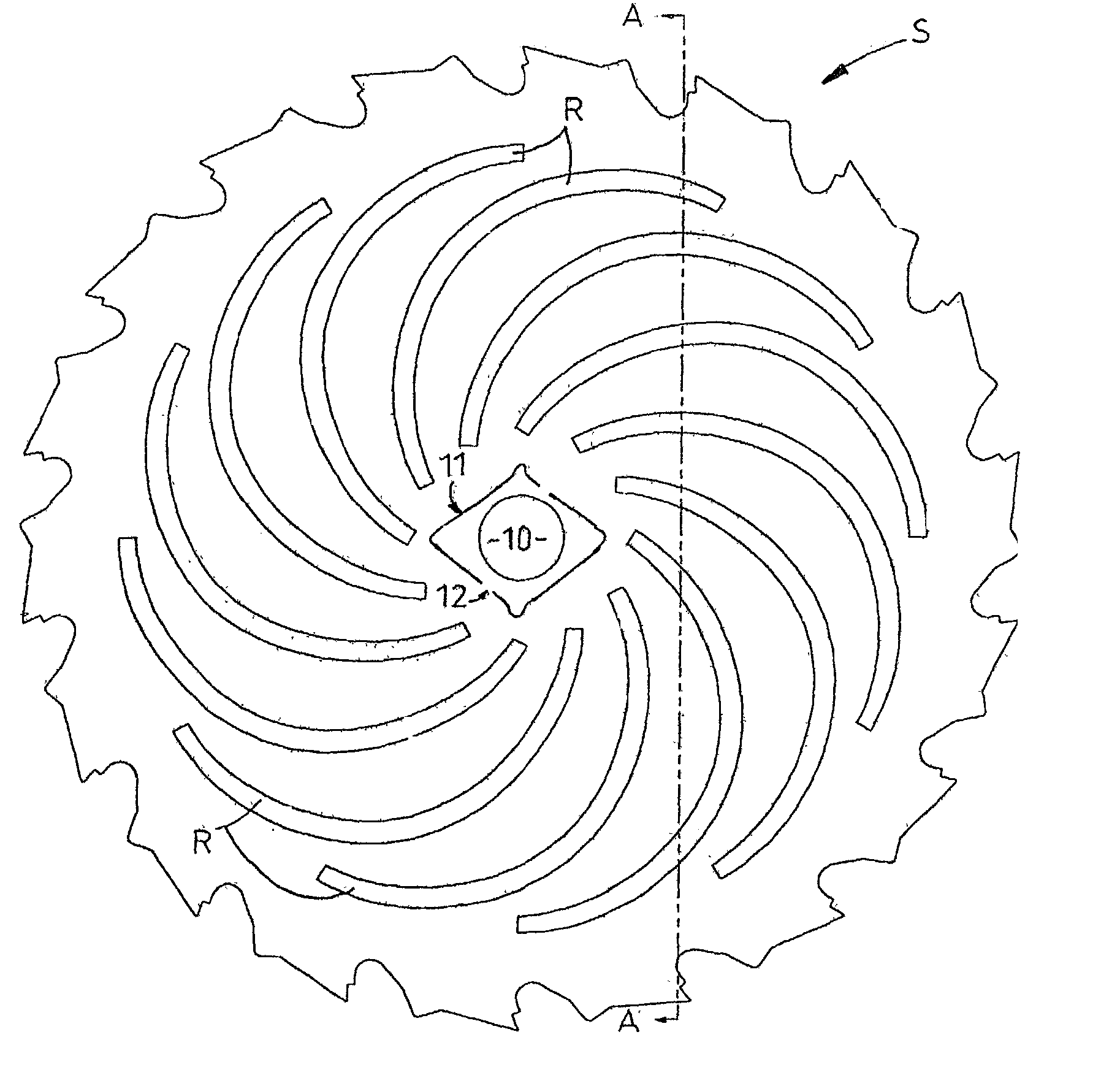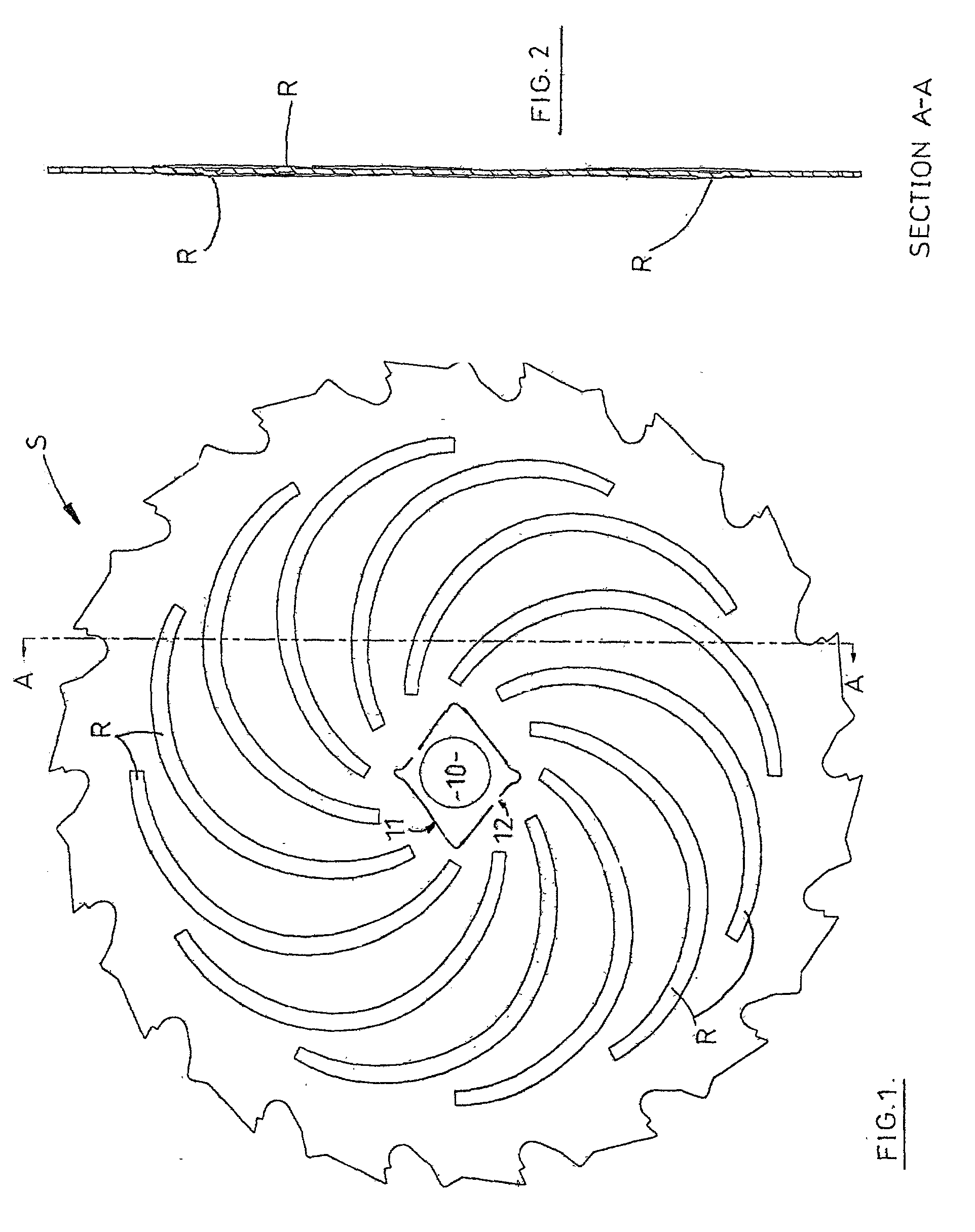Laser cut saw blades
a technology of saw blades and blades, which is applied in the field of circular saw blades, can solve the problems of time-consuming and expensive process of circular saw blade fabrication, associated poor cutting during high-speed operation of blades, and the problem of often more acute problems
- Summary
- Abstract
- Description
- Claims
- Application Information
AI Technical Summary
Problems solved by technology
Method used
Image
Examples
Embodiment Construction
[0023] The first step of manufacture involves selection of the base material, in this example coils of 300 or 400 series stainless steel which weigh, 5-10 tons and have a gauge of 0.6 mm to 2.5 mm depending the end product required. The coils measure approx. 1216 mm wide and are pre-hardened to a suitable Rockwell hardness for saw blades, typically 36-44 RC. The coils are then split down to size, stress relieved, flattened and cut into squares to approximately the size of the saw blade to be produced. This is done using multi-directional levelling rollers.
[0024] The square blanks are then checked for flatness before laser cutting takes place.
[0025] In the next step the arbor and blade periphery are cut from the stainless steel blanks using a high powered CO.sub.2 laser using pure nitrogen as an assist gas, to give a clean non-carbonised cut. This means that there is no need to clean the saw tip pockets with a sand blaster or grinding wheel which would otherwise be necessary for the ...
PUM
| Property | Measurement | Unit |
|---|---|---|
| thickness | aaaaa | aaaaa |
| diameter | aaaaa | aaaaa |
| thickness | aaaaa | aaaaa |
Abstract
Description
Claims
Application Information
 Login to View More
Login to View More - R&D
- Intellectual Property
- Life Sciences
- Materials
- Tech Scout
- Unparalleled Data Quality
- Higher Quality Content
- 60% Fewer Hallucinations
Browse by: Latest US Patents, China's latest patents, Technical Efficacy Thesaurus, Application Domain, Technology Topic, Popular Technical Reports.
© 2025 PatSnap. All rights reserved.Legal|Privacy policy|Modern Slavery Act Transparency Statement|Sitemap|About US| Contact US: help@patsnap.com


